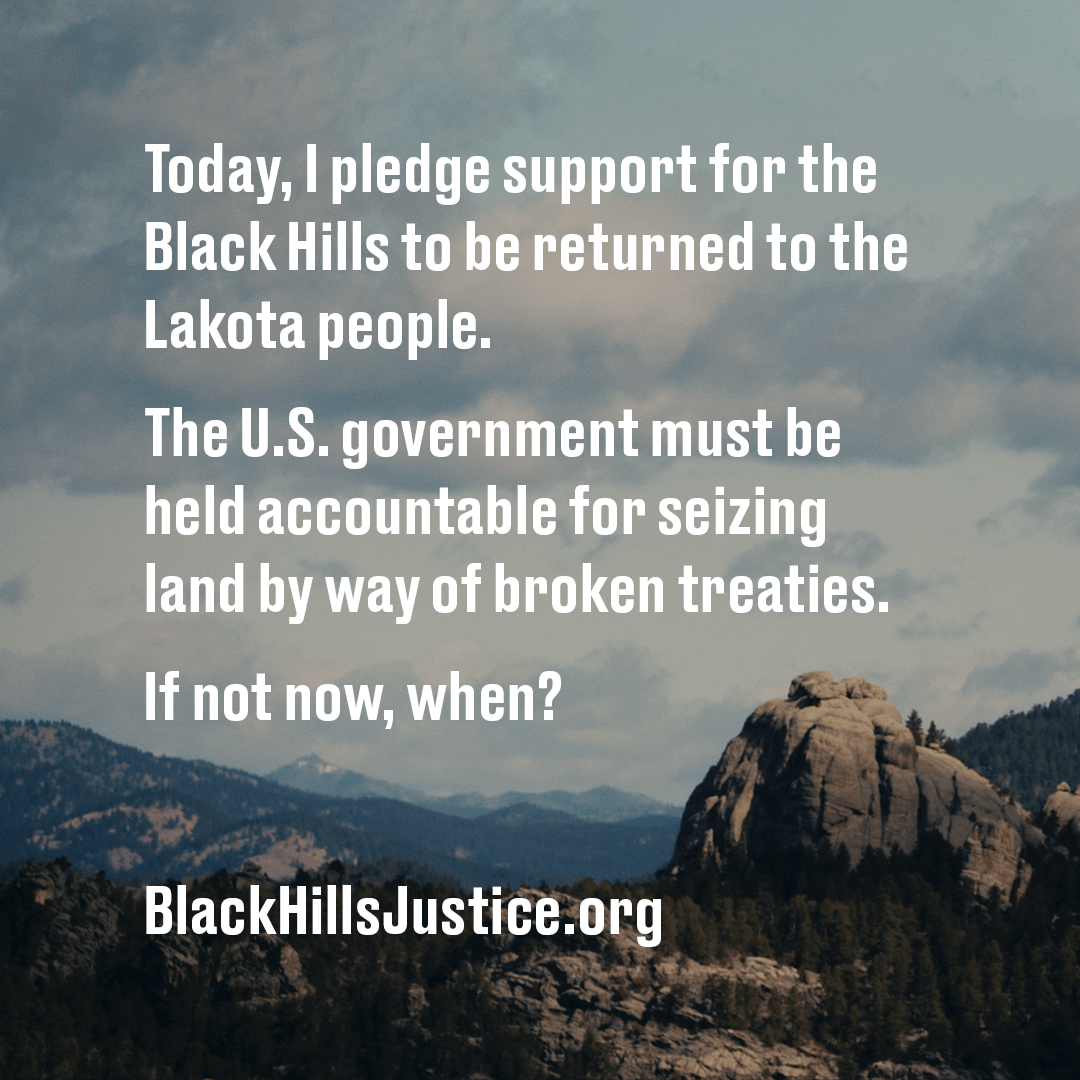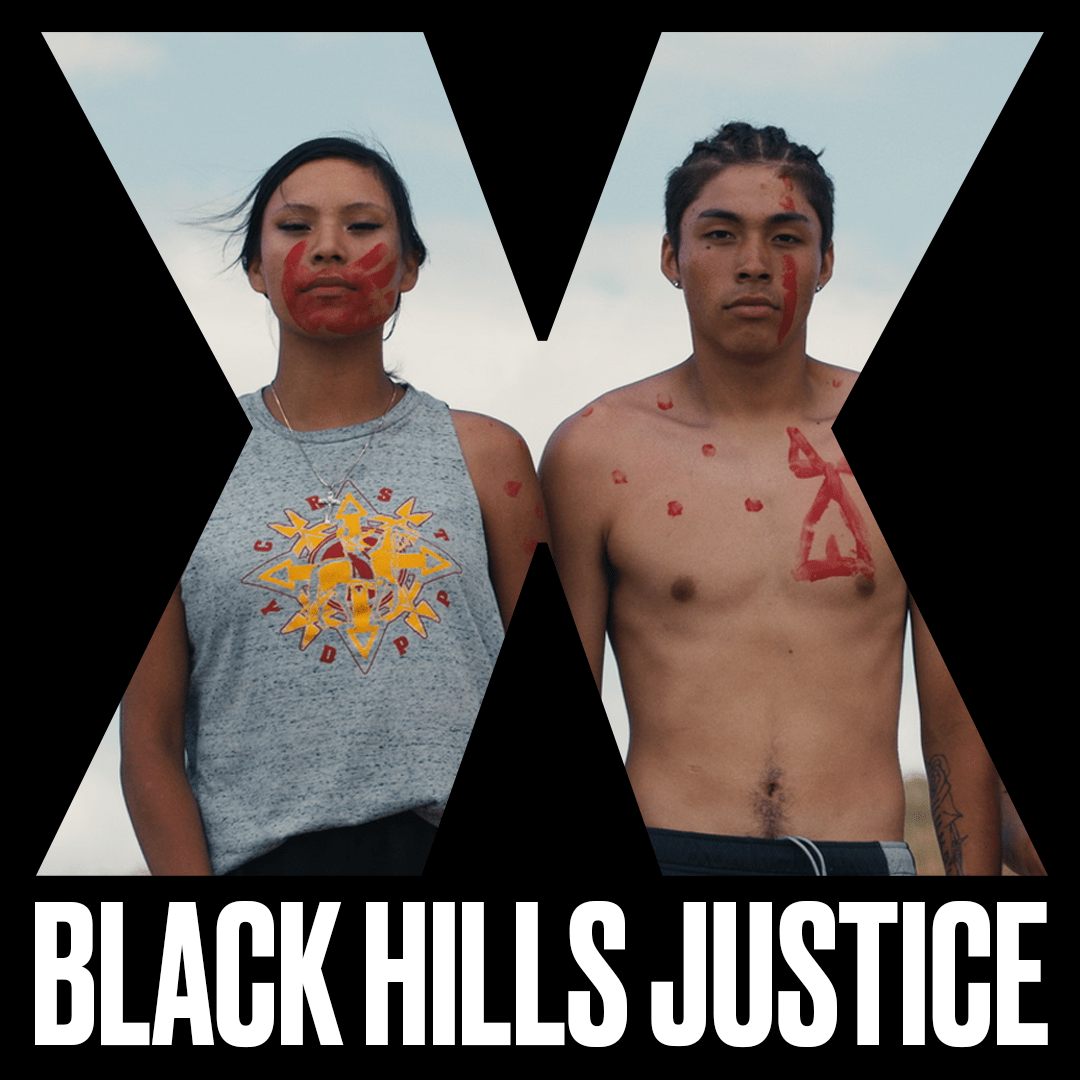PRINCIPLES
for Engagement on the Black Hills Issue:
- Take direction from Lakota people who are leading the struggle for the Black Hills.
- Allies do not speak for Lakota people.
- The fight for the Black Hills will be lead by prayer and natural law.
- Allies will not take meetings on behalf of Lakota people on the Black Hills issue without Lakota people present and leading the meeting.
- Respect the self-determination of Lakota People.
- Allies will support the direction of our traditional treaty councils.
- Allies will support the direction of our Tribal leaders.
- Allies will respect our Elders.
- The Lakota pursuit of Justice and Liberation must be led by Lakota people.
CONTINUE
FAQ
Who has authority over the Black Hills now?
Currently the Black Hills are mostly “owned” by the United States Federal Government.
- The US Forest Service: 1.5 million acres (South Dakota & Wyoming)
- The National Park Service: 41,500 acres
- Wind Cave National Park: 38,971 acres
- Mt. Rushmore National Park: 1,238 acres
- Jewel Cave National Park: 1,274 acres
- South Dakota State Parks: 71,000 acres
- Private individuals & corporations: 300,000 acres
- Tribes: 2,000 acres
How do the Lakota get the Black Hills back?
There are four ways the Lakota people can get the Black Hills returned:
- Congress can return the federal lands via legislation.
- President Biden can use his executive powers to return the federal lands.
- Donors can help purchase private land with the Lakota.
- Current private landowners can donate land to the Lakota.
What are the current mining issues in the Black Hills?
Gold, lithium, rare earth elements, and uranium are all found in the Black Hills. The Lakota are asking the Bureau of Land Management to withdraw mining leases from all public lands in the Black Hills in order to protect them from further desecration. Most of these public lands are sacred places to the Lakota.
Timeline
Learn More
Vine Deloria Jr - Reflections on the Black Hills Claim
Nick Estes - Our History Is the Future: Standing Rock Versus the Dakota Access Pipeline, and the Long Tradition of Indigenous Resistance.
Mario Gonzalez and Elizabeth Cook-Lynn - The Politics of Hallowed Ground: Wounded Knee and the Struggle for Indian Sovereignty
Craig Howe, Lydia Whirlwind Soldier, and Lanniko L. Lee - He Sapa Woihanble: Black Hills Dream
Black Elk and John G. Neihardt - The Sixth Grandfather: Black Elk's Teachings Given to John G. Neihardt
BLACK HILLS JUSTICE
THE BLACK HILLS ARE NOT FOR SALE.
X MARKS THE FRONTLINES
Thank you for joining the movement to return the Black Hills.
You are here because you want to be part of #LandBack with the Lakota people. We need you to be ready. We need you to come when called. Commit to taking action for Black Hills Justice.
KEY PLAYERS
Tribes and Ally Organizations Working on the Return of the Black Hills:
RESOURCES
Together, we have the power to return the Black Hills to Lakota hands.

